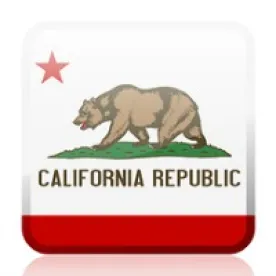On September 17, 2020, Governor Gavin Newsom signed Assembly Bill (AB) 685 into law, enacting California Labor Code Section 6409.6 and amending other state statutes. As explained further below, Section 6409.6 obligates employers to notify employees, the employees’ exclusive representative (such as a union), and subcontractors, within one business day of an employer’s receiving notice of a potential COVID-19 workplace exposure from a “qualifying individual.”
Effective date
Section 6409.6 takes effect on January 1, 2021. This means that employers have a limited time in which to put compliance procedures into place.
Who is a “qualifying individual”?
An employer must provide notice when a “qualifying individual” may have exposed the workplace to COVID-19. An individual “qualifies” when she or he falls within one of the following categories:
- a laboratory has confirmed that the individual has a case of COVID-19;
- a licensed health care provider has given a positive COVID-19 diagnosis to the individual;
- a public health official has issued a COVID-19–related isolation order; or
- the individual has died from COVID-19.
When does the employer receive a “notice of potential exposure”?
An employer receives notice of a potential exposure to COVID-19 in any of the following circumstances:
- a public health official or licensed medical provider notifies the employer “that an employee was exposed to a qualifying individual at the worksite”;
- an employee or the employee’s emergency contact notifies the employer that the employee is a “qualifying individual”;
- the employer’s COVID-19 testing process discloses that the employee is a “qualifying individual”; or
- a subcontracted employer notifies the employer that a “qualifying individual” was on the employer’s worksite.
Whom does the employer have to notify?
Section 6409.6 is ambiguous as to whether it intends for the employer to notify more than one category of employee within one business day of receiving notice of a qualifying individual potentially having exposed the worksite to COVID-19. The new law requires the employer to provide written notice to the following employees:
- All employees on-site at the same worksite during the “infectious period,” as the California Department of Public Health (CDPH) defines the term. The employer must provide these employees, any exclusive representative of the employees, and employers of subcontracted employees that they may have been exposed to COVID-19.
- All employees who may have been exposed and their exclusive representative. Presumably, Section 6409.6 intends this category of employees to be the same category referred to immediately above. The employer must provide these employees “with information regarding COVID-19–related benefits to which the employee[s] may be entitled under applicable federal, state, or local laws, including … workers’ compensation … COVID-19–related leave, company sick leave, state-mandated leave, [and] supplemental sick leave.” This section also refers to “negotiated leave provisions,” so employers may wish to include any applicable leave provided under a collective bargaining agreement. The employer also must notify these employees that the law protects them from COVID-19–related discrimination and retaliation.
- All employees, their exclusive representative, and employers of subcontracted employees. This section is unclear as to whether it means all employees or those who were on-site at the same worksite during the infectious period and/or who may have been exposed (if those two categories are distinct). The employer must notify this category of “the disinfection and safety plan that the employer plans to implement and complete per the guidelines” issued by the U.S. Centers for Disease Control and Prevention (CDC). An employer required to provide notification also may wish to review California’s COVID-19 Employer Playbook guidelines on reopening.
What does Section 6409.6 mean by “worksite” when it requires that an employer provide notice to all employees who worked on-site at the same worksite as the qualifying individual?
Section 6409.6 defines “worksite” as the “building, store, facility, agricultural field, or other location where a worker worked during the infectious period. [The term ‘worksite’] does not apply to buildings, floors, or other locations of the employer that a qualified individual did not enter. In a multiworksite environment, the employer need only notify employees who were at the same worksite as the qualified individual.”
Does the employer have to provide notice in writing? If so, in what form and in what language?
The employer must provide notice in writing and must do so in the manner in which the employer usually communicates with employees about employment-related information so long as the information is “anticipated to be received by the employee within one business day.” The employer may communicate the notice by email, text message, or by handing it to each employee. The notice must be in both English and the language that a majority of the workforce understands.
Must the employer notify the union?
Yes, the employer must notify the employees’ exclusive representative. The union notification must include the same information that a California Division of Occupational Safety and Health (Cal/OSHA) Form 300 incident report requires, unless the employer does not know the information or it does not apply.
May the employer reveal the name of the “qualifying individual”?
The employer must not reveal the name of the qualifying individual to employees or subcontracted employers. Both federal and state law protect that information. As explained immediately above, however, the employer must provide to the union with the same information that it would provide on a Cal/OSHA Form 300, including the qualifying individual’s identity.
Must the employer notify the CDPH of anything and, if so, of what?
Yes. If an employer receives notice of the number of COVID-19 cases that meet the CDPH’s public definition of a COVID-19 outbreak, the employer must, within 48 hours, notify the local public health agency in the worksite’s jurisdiction of the “names, number, occupation, and worksite of employees who meet the definition … of a qualifying individual.”
Must an employer maintain any records under Section 6409.6?
Yes, the employer must maintain records of the notices it provides for at least three years.
Does Section 6409.6 prohibit retaliation?
As with many other state and local COVID-19–related statutes and ordinances, Section 6409.6 prohibits retaliation against qualifying individuals.
What can employers do to prepare for California Labor Code Section 6409.6’s taking effect?
Employers may wish to prepare for Section 6409.6’s effective date by designating an individual or individuals to take responsibility for putting together a compliance process. Employers may want to consider identifying the means by which they will notify employees of a potential workplace exposure. They also may wish to compile a list of all federal, state, local, and collective bargaining agreement benefits for which an employee who potentially is exposed to COVID-19 is eligible. Employers also may wish to decide upon and consider putting in writing the disinfection and safety plans they will implement in the event they receive notice that a “qualifying individual” may have exposed the worksite to COVID-19. In order to comply with Section 6409.6’s “one business day” notice deadline, employers also may want to consider preparing fill-in-the-blank notice templates to employees, the employees’ exclusive representative (i.e., the union), and subcontractors before January 1, 2021.




 />i
/>i

